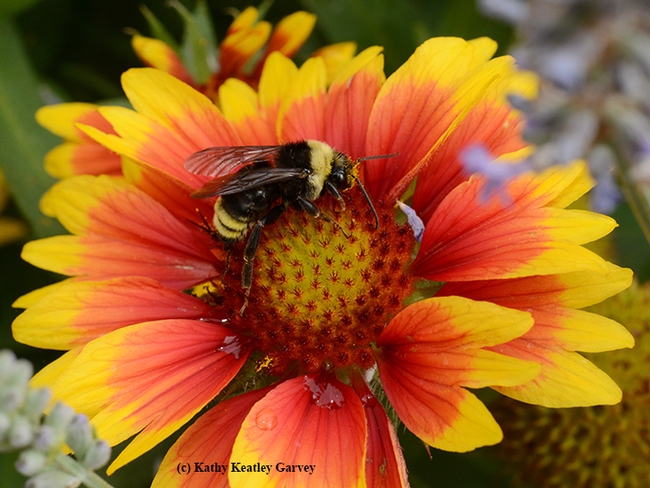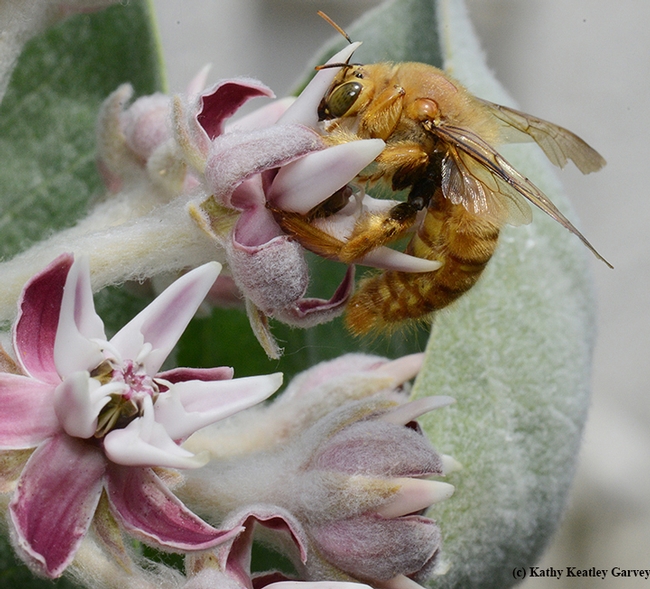- Author: Kathy Keatley Garvey
"Sweat bees have earned their common name from the tendency, especially of the smaller species,to alight on one's skin and lap up perspiration for both its moisture and salt content."
So write University of California scientists in their award-winning book, California Bees and Blooms, a Guide for Gardeners and Naturalists.
California has some 1600 species of undomesticated or wild bees, point out the authors (Gordon Frankie, Robbin Thorp, Rollin Coville and Barbara Ertter).
And one of them is the sweat bee, Halictus ligatus, a member of the family Halictidae. It's a medium-sized, ground-nesting bee with a striped abdomen.
This week one of these species (as identified by research scientist John Ascher) looked especially striking on a Black-Eyed Susan, Rudbeckia hirta, a member of the Aster (Asteraceae) family. Both the plant and the bee are natives.
Several years ago we managed to photograph a flameskimmer dragonfly, Libellula saturata, munching on one of these sweat bees. Not a good day for that little gal!
No dragonflies were around, however, when we watched this one foraging on a Black-Eyed Susan.
Did you know that the Black-Eyed Susan is the designated state flower of Maryland? And that it was the inspiration for the University of Southern Mississippi's school colors (black and gold)? And that it's a larval host to butterflies such as the bordered batch, gorgone checkerspot and silvery checkerspot?
Who knew? If you plant it, though, be aware that it is toxic (when ingested) to cats.
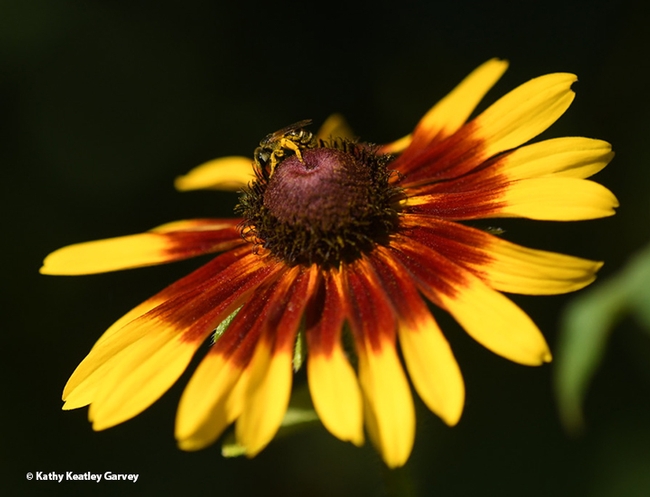
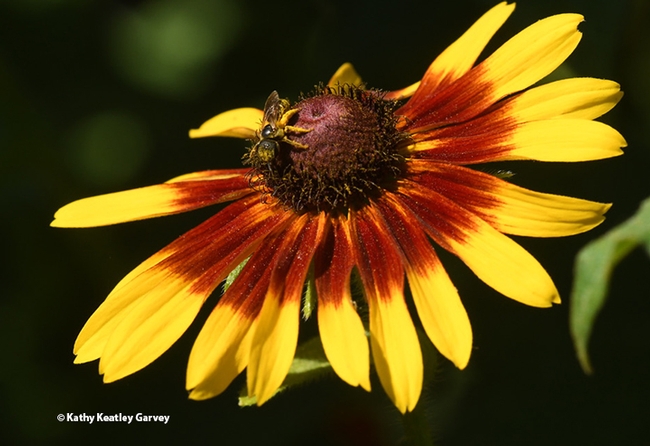
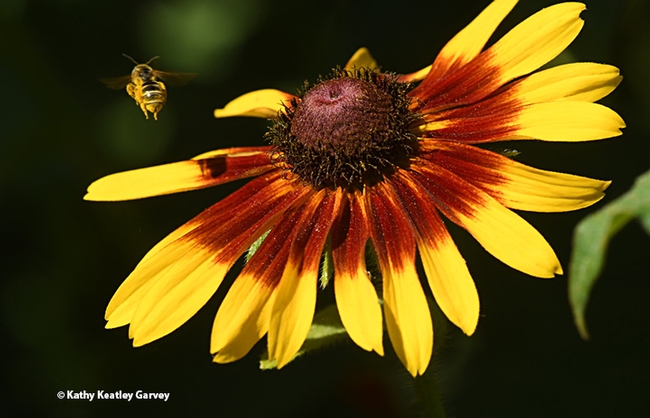
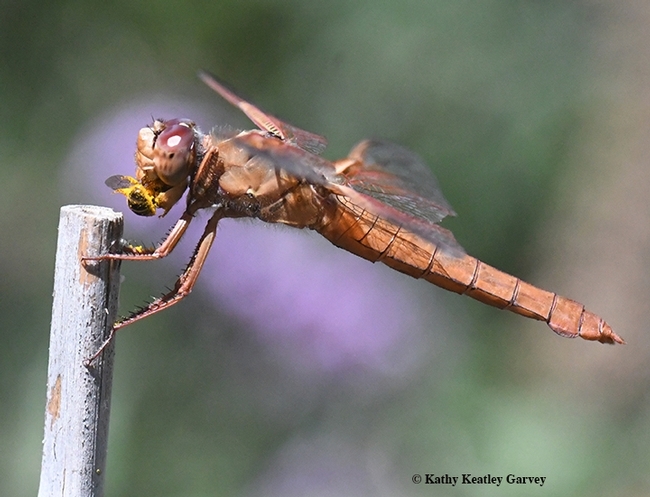
- Author: Kathy Keatley Garvey
What's better than a yellow-faced bumble bee (Bombus vosnesenskii) on yellow mustard?
Not much. Both are signs of early spring.
Mustard is popping up all over, along with oxalyis and wild radish. The earth is warming. Spring is here. Get ready.
In the University of California book, California Bees and Blooms: Guide for Gardeners and Naturalists, the authors write that B. vosnesenskii and B. melanopygus "are considered spring bees because that is when their population is highest, tailing off in numbers the rest of the year."
The book is the work of Gordon Frankie, UC Berkeley entomology professor; Robbin Thorp, distinguished emeritus professor of entomology at UC Davis; photographer and entomologist Rollin Coville (he received his doctorate from UC Berkeley), and botanist Barbara Ertter, also affiliated with UC Berkeley.
Be sure to check out their companion pocket guide on the UC ANR website. It's titled Common Bees in California Gardens. It will help you identify 24 of the most common bees found in urban gardens and landscapes. That's 24 out of nearly 1600 species of native bees found in the Golden State.
Yellow-faced bumble bee, yellow mustard, Golden State....Life is good...
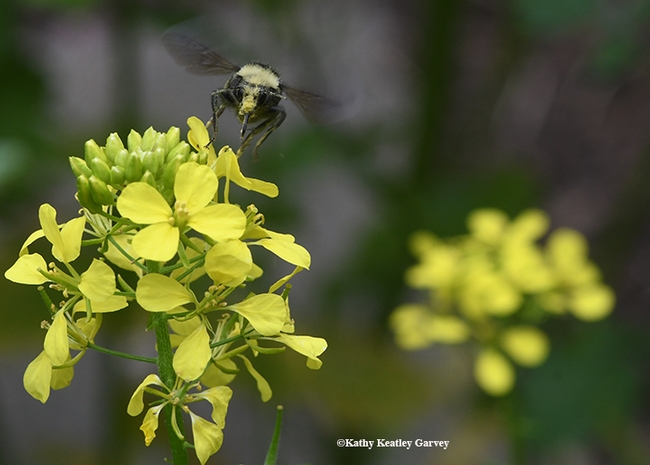
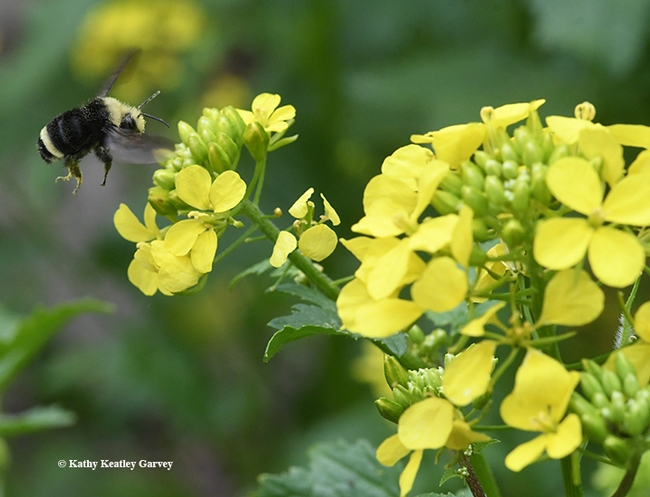
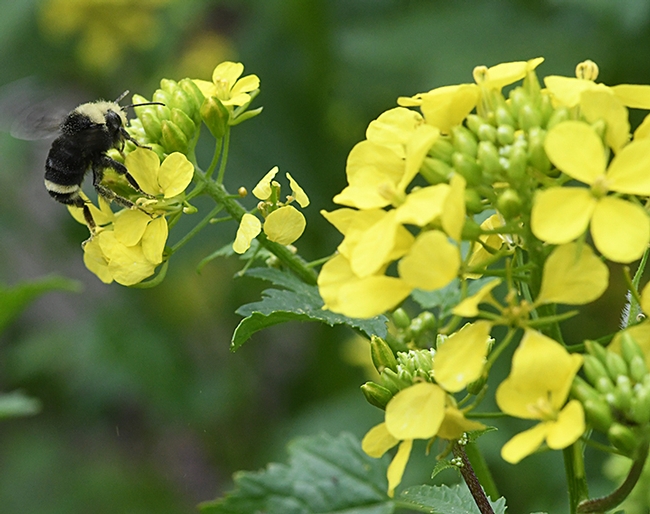
- Author: Kathy Keatley Garvey
It's spring and it's loud in the Spanish lavender patch.
The girls--the honey bees--are buzzing furiously as they forage among the blossoms, but so are the boys, in this case the mountain carpenter bee, Xyclocopa tabaniformis orpifex. The girls are there for the pollen and nectar to take back to their colonies, and the boys are there for some flight fuel. And to find mates.
Xyclocopa tabaniformis orpifex is one of three species of California carpenter bees: the others are Xyclocopa varipuncta (the largest one, about the size of a bumble bee), and Xyclocopa californica. All females are mostly black. The male Xyclocopa varipuncta, aka "the teddy bear bee," is a golden with green eyes. The other males often have yellow hair on their head or thorax.
The carpenter bees usually fly from March through October, according to California Bees and Blooms, A Guide for Gardeners and Naturalists, a University of California production featuring the work of Gordon Frankie Robbin Thorp, Rollin Coville, and Barbara Ertter (Thorp is a distinguished emeritus professor of entomology at UC Davis, Frankie is a professor at UC Berkeley, and Coville and Ertter are also affiliated with UC Berkeley).
A handy identification pocket guide--a companion to California Bees and Blooms--is Common Bees in California Gardens, published by the University of California Agriculture and Nature Resources. It will help you identify 24 bees and you can lean about the distribution, flight season, nesting habits, floral hosts and how each bee species transports pollen. You'll see beautiful images by noted photographer Coville, who holds a Ph.D. in entomology from UC Berkeley.
Excellent publications! The more you know about bees, the more likely you are to protect them and plant for them.
Ah, spring! It's loud in the Spanish lavender patch...

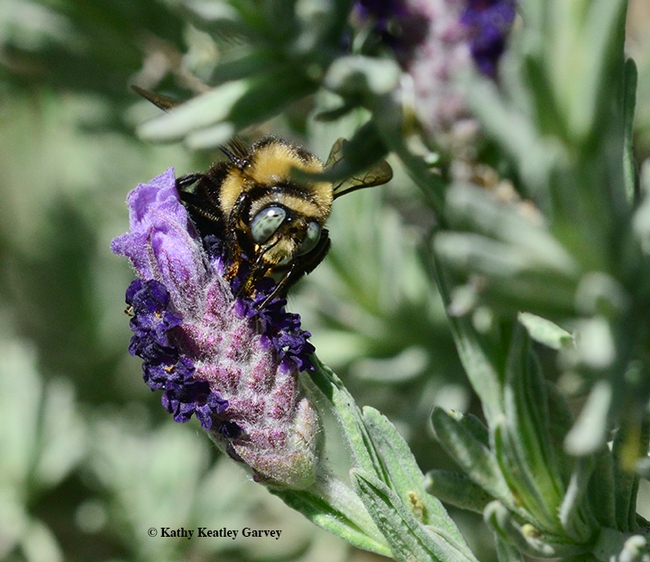
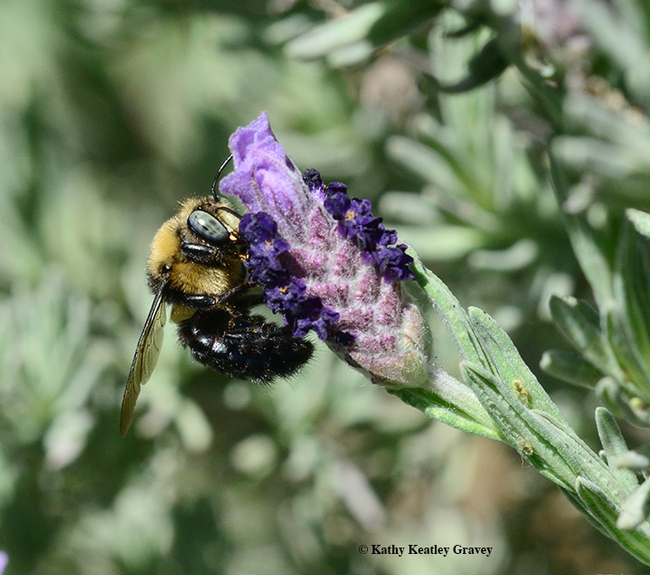
- Author: Kathy Keatley Garvey
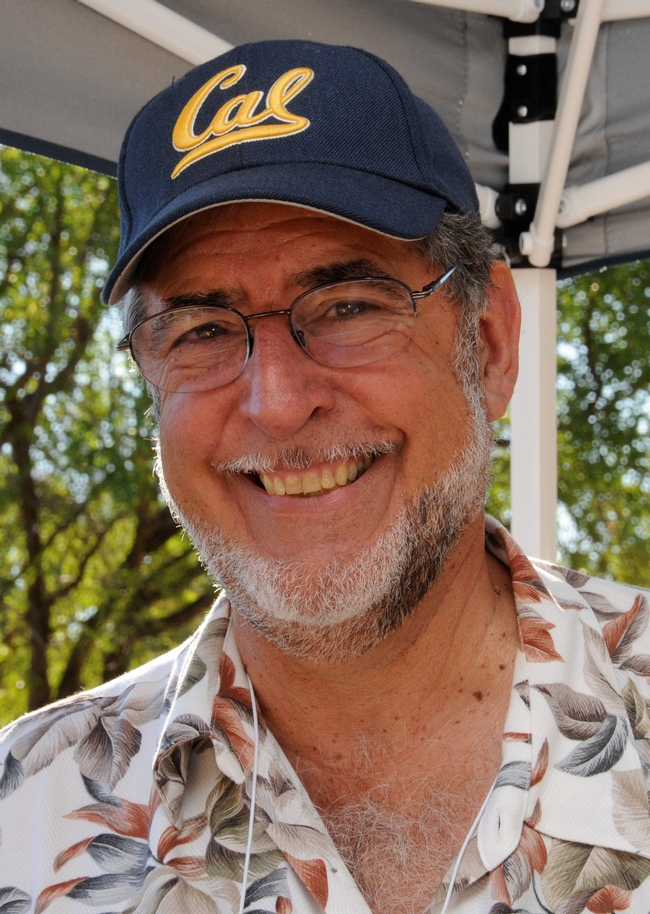
Or have you ever seen a bee nectaring in a community garden and wondered "How can I attract THAT bee to my yard?"
Just like all floral visitors are not bees, not all bees are honey bees. However, the honey bee, Apis mellifera, is the most well known. Worldwide, there are 20,000 species of bees. Of that number, 4000 are found in the United States, and 1600 of them in California.
Here's how you can find out more about them.
The University of California Hopland Research and Extension Center has scheduled a four-hour program, from 10 a.m. to 2 p.m. on Saturday, Sept. 23 on "Native Bees in Your Backyard" at two sites in Hopland and you're invited.
UC Berkeley professor Gordon Frankie and entomologist/photographer Rollin Coville, co-authors of California Bees and Blooms: A Guide for Gardeners and Naturalists, will discuss native bees. They and will be joined by Kate Frey, award-winning gardener and author of “The Bee-Friendly Garden" who will provide a guided tour of her gardens and explain what plants attract pollinators. Her gardens are renowned for their floristic diversity, color and the habitats they provide for wildlife.
Participants will meet from 10 a.m. to 11:30 a.m. at the Kate Frey Gardens and from 11:30 to 2 p.m. at the UC Hopland and Research Center, 4070 University Road, Hopland, from 11:30 to 2 p.m. A locally sourced, honey-themed lunch, catered by Beth Keiffer, will be served at noon.
Hannah Bird, community educator at the Hopland Research and Extension Center, says attendees will "learn about some of the 1600 native bee species found in California--from the leafcutting bee to the cuckoo bee, the sweat bee to the mining bee!" They will learn how to identify them and how to accommodate their needs.
Frankie will share the research done by UC Berkeley Urban Bee Lab and Rollin Coville will display and discuss his photographs of native bees and how he captured the images.
Advance registration is required by Sept. 18. The cost is $40, which includes lunch. Click here to register. Maps and directions will be provided to registrants.
For more information, Bird can be contacted at hbird@ucanr.edu or (707) 744-1424, Ext. 105. Hopland Research Center. All interested persons can also sign up for the Hopland monthly email newsletter,
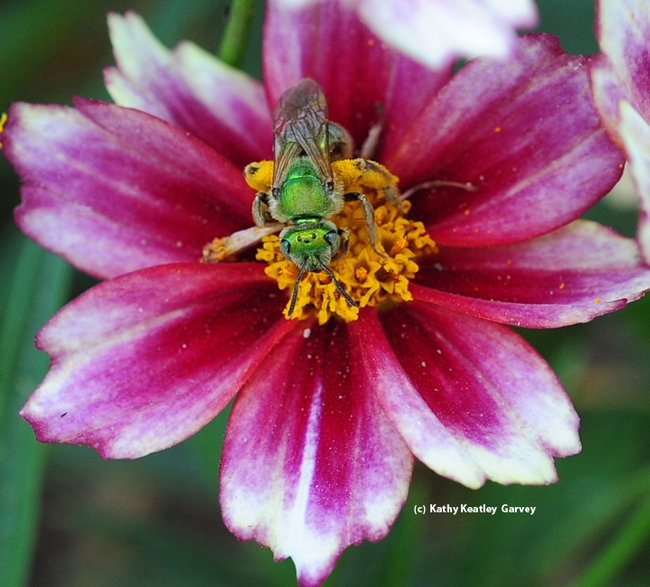

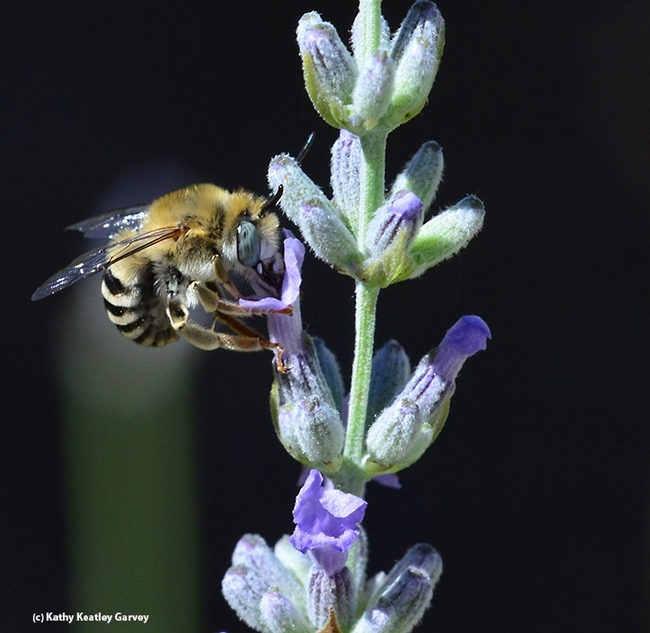
- Author: Kathy Keatley Garvey
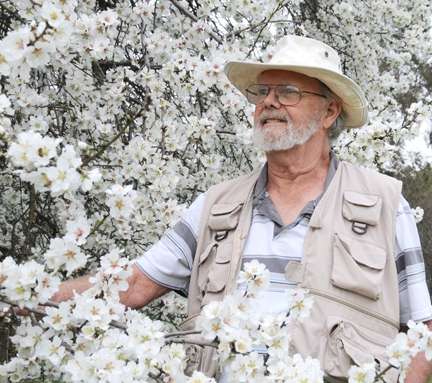
Specifically, California bees and blooms.
Even more specifically, undomesticated bees (that is, not honey bees).
Did you know that:
- Of the 4000 undomesticated bee species in the United States, some 1600 species are found in California?
- Seventy percent of bees nest in the ground, and 30 percent in pre-existing cavities?
Like honey bees, native bees are declining due to pesticides, habitat destruction and fragmentation, global climate change, drought and other extreme weather events, and lack of nutrition.
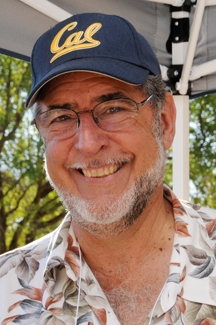
Native pollinator specialist Thorp, a Bohart Museum associate, is a distinguished emeritus professor, UC Davis Department of Entomology and Nematology and also the co-author of Bumble Bees of North America: An Identification Guide (Princeton University Press). He retired in 1994 after 30 years of teaching, research and mentoring graduate students but continues his research on pollination biology and ecology, systematics, biodiversity, and conservation of bees, especially bumble bees. Among his special interests: native bees of the vernal pool ecosystem.He maintains his office in the Harry H. Laidlaw Jr. Honey Bee Research Facility on Bee Biology Road, west of the central campus.
Native bee expert Frankie is a professor and research entomologist at UC Berkeley. His specialty is behavioral ecology of solitary bees in wildland, agricultural, and urban environments of California and Costa Rica. More information on his projects can be found at www.helpabee.org. See also the Bay Nature interview.
Coville, who holds a doctorate in entomology from UC Berkeley, is a noted insect and spider photographer. Check out the photos on his website. Coville also has a strong interest in the biology and behavior of Hymenoptera and has published papers on Trypoxylon wasps and Centris bees.
Ertter is curator of Western North American Botany at the University and Jepson Herbaria, UC Berkeley. Primary research interests include western floristics (including the East Bay), systematics of several members of the rose family (that is,, Potentilla, Ivesia, Rosa), and the history of western botany.
California Bees and Blooms showcases 22 of the most common genera (and six species of cuckoo bees). You can learn about their distinctive behavior, social structure, flight season, preferred flowers (there are more than 6500 flowering species or angiosperms in California), and enemies, such as praying mantids.
The some 200 photos in the book will help you identify native bees, such as the bumble bee and carpenter bee below. We found these foraging in our backyard pollinator garden.
